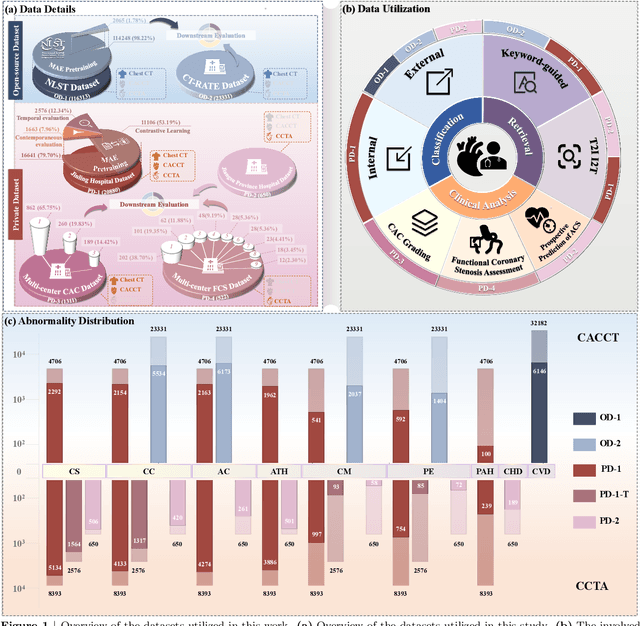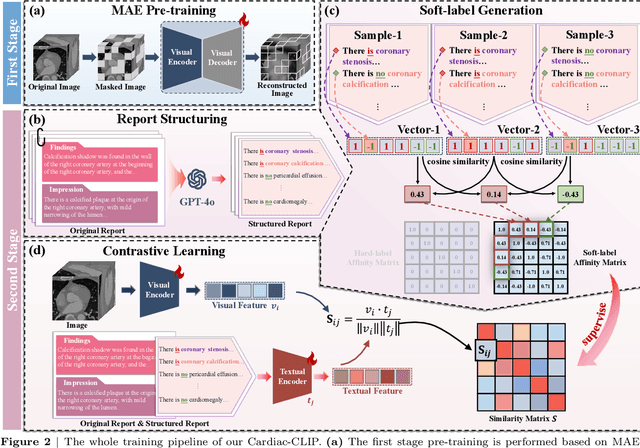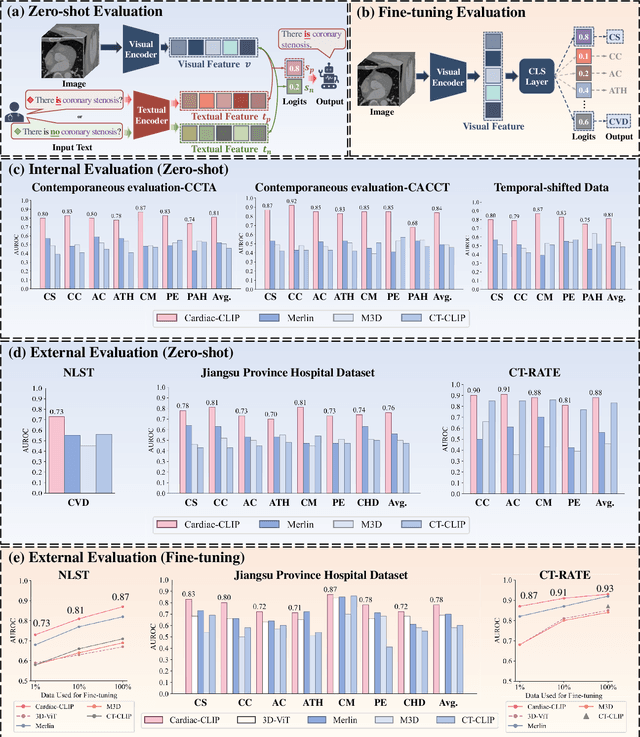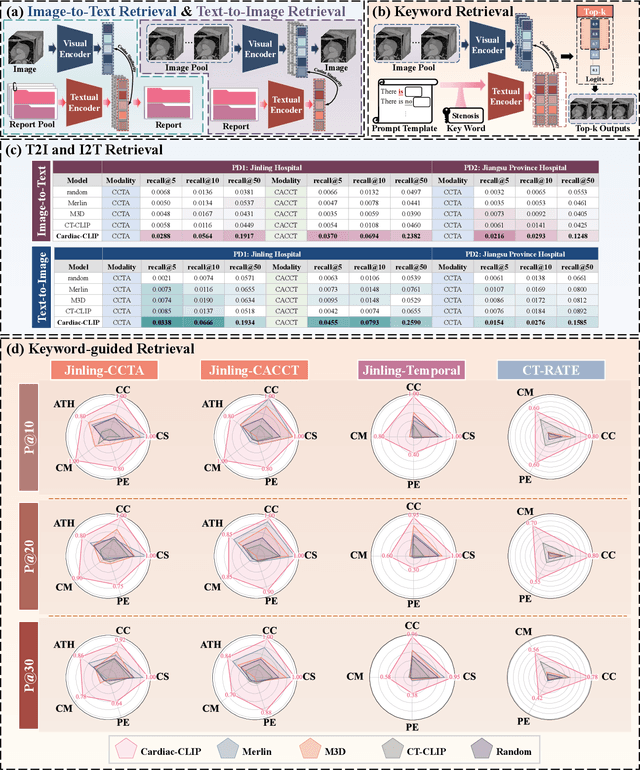Ji Zhang
Federated Unlearning in the Wild: Rethinking Fairness and Data Discrepancy
Oct 08, 2025Abstract:Machine unlearning is critical for enforcing data deletion rights like the "right to be forgotten." As a decentralized paradigm, Federated Learning (FL) also requires unlearning, but realistic implementations face two major challenges. First, fairness in Federated Unlearning (FU) is often overlooked. Exact unlearning methods typically force all clients into costly retraining, even those uninvolved. Approximate approaches, using gradient ascent or distillation, make coarse interventions that can unfairly degrade performance for clients with only retained data. Second, most FU evaluations rely on synthetic data assumptions (IID/non-IID) that ignore real-world heterogeneity. These unrealistic benchmarks obscure the true impact of unlearning and limit the applicability of current methods. We first conduct a comprehensive benchmark of existing FU methods under realistic data heterogeneity and fairness conditions. We then propose a novel, fairness-aware FU approach, Federated Cross-Client-Constrains Unlearning (FedCCCU), to explicitly address both challenges. FedCCCU offers a practical and scalable solution for real-world FU. Experimental results show that existing methods perform poorly in realistic settings, while our approach consistently outperforms them.
FEAT: A Multi-Agent Forensic AI System with Domain-Adapted Large Language Model for Automated Cause-of-Death Analysis
Aug 11, 2025Abstract:Forensic cause-of-death determination faces systemic challenges, including workforce shortages and diagnostic variability, particularly in high-volume systems like China's medicolegal infrastructure. We introduce FEAT (ForEnsic AgenT), a multi-agent AI framework that automates and standardizes death investigations through a domain-adapted large language model. FEAT's application-oriented architecture integrates: (i) a central Planner for task decomposition, (ii) specialized Local Solvers for evidence analysis, (iii) a Memory & Reflection module for iterative refinement, and (iv) a Global Solver for conclusion synthesis. The system employs tool-augmented reasoning, hierarchical retrieval-augmented generation, forensic-tuned LLMs, and human-in-the-loop feedback to ensure legal and medical validity. In evaluations across diverse Chinese case cohorts, FEAT outperformed state-of-the-art AI systems in both long-form autopsy analyses and concise cause-of-death conclusions. It demonstrated robust generalization across six geographic regions and achieved high expert concordance in blinded validations. Senior pathologists validated FEAT's outputs as comparable to those of human experts, with improved detection of subtle evidentiary nuances. To our knowledge, FEAT is the first LLM-based AI agent system dedicated to forensic medicine, offering scalable, consistent death certification while maintaining expert-level rigor. By integrating AI efficiency with human oversight, this work could advance equitable access to reliable medicolegal services while addressing critical capacity constraints in forensic systems.
Cardiac-CLIP: A Vision-Language Foundation Model for 3D Cardiac CT Images
Jul 29, 2025



Abstract:Foundation models have demonstrated remarkable potential in medical domain. However, their application to complex cardiovascular diagnostics remains underexplored. In this paper, we present Cardiac-CLIP, a multi-modal foundation model designed for 3D cardiac CT images. Cardiac-CLIP is developed through a two-stage pre-training strategy. The first stage employs a 3D masked autoencoder (MAE) to perform self-supervised representation learning from large-scale unlabeled volumetric data, enabling the visual encoder to capture rich anatomical and contextual features. In the second stage, contrastive learning is introduced to align visual and textual representations, facilitating cross-modal understanding. To support the pre-training, we collect 16641 real clinical CT scans, supplemented by 114k publicly available data. Meanwhile, we standardize free-text radiology reports into unified templates and construct the pathology vectors according to diagnostic attributes, based on which the soft-label matrix is generated to supervise the contrastive learning process. On the other hand, to comprehensively evaluate the effectiveness of Cardiac-CLIP, we collect 6,722 real-clinical data from 12 independent institutions, along with the open-source data to construct the evaluation dataset. Specifically, Cardiac-CLIP is comprehensively evaluated across multiple tasks, including cardiovascular abnormality classification, information retrieval and clinical analysis. Experimental results demonstrate that Cardiac-CLIP achieves state-of-the-art performance across various downstream tasks in both internal and external data. Particularly, Cardiac-CLIP exhibits great effectiveness in supporting complex clinical tasks such as the prospective prediction of acute coronary syndrome, which is notoriously difficult in real-world scenarios.
Dual-branch Prompting for Multimodal Machine Translation
Jul 23, 2025Abstract:Multimodal Machine Translation (MMT) typically enhances text-only translation by incorporating aligned visual features. Despite the remarkable progress, state-of-the-art MMT approaches often rely on paired image-text inputs at inference and are sensitive to irrelevant visual noise, which limits their robustness and practical applicability. To address these issues, we propose D2P-MMT, a diffusion-based dual-branch prompting framework for robust vision-guided translation. Specifically, D2P-MMT requires only the source text and a reconstructed image generated by a pre-trained diffusion model, which naturally filters out distracting visual details while preserving semantic cues. During training, the model jointly learns from both authentic and reconstructed images using a dual-branch prompting strategy, encouraging rich cross-modal interactions. To bridge the modality gap and mitigate training-inference discrepancies, we introduce a distributional alignment loss that enforces consistency between the output distributions of the two branches. Extensive experiments on the Multi30K dataset demonstrate that D2P-MMT achieves superior translation performance compared to existing state-of-the-art approaches.
RLHGNN: Reinforcement Learning-driven Heterogeneous Graph Neural Network for Next Activity Prediction in Business Processes
Jul 03, 2025Abstract:Next activity prediction represents a fundamental challenge for optimizing business processes in service-oriented architectures such as microservices environments, distributed enterprise systems, and cloud-native platforms, which enables proactive resource allocation and dynamic service composition. Despite the prevalence of sequence-based methods, these approaches fail to capture non-sequential relationships that arise from parallel executions and conditional dependencies. Even though graph-based approaches address structural preservation, they suffer from homogeneous representations and static structures that apply uniform modeling strategies regardless of individual process complexity characteristics. To address these limitations, we introduce RLHGNN, a novel framework that transforms event logs into heterogeneous process graphs with three distinct edge types grounded in established process mining theory. Our approach creates four flexible graph structures by selectively combining these edges to accommodate different process complexities, and employs reinforcement learning formulated as a Markov Decision Process to automatically determine the optimal graph structure for each specific process instance. RLHGNN then applies heterogeneous graph convolution with relation-specific aggregation strategies to effectively predict the next activity. This adaptive methodology enables precise modeling of both sequential and non-sequential relationships in service interactions. Comprehensive evaluation on six real-world datasets demonstrates that RLHGNN consistently outperforms state-of-the-art approaches. Furthermore, it maintains an inference latency of approximately 1 ms per prediction, representing a highly practical solution suitable for real-time business process monitoring applications. The source code is available at https://github.com/Joker3993/RLHGNN.
OoDDINO:A Multi-level Framework for Anomaly Segmentation on Complex Road Scenes
Jul 02, 2025Abstract:Anomaly segmentation aims to identify Out-of-Distribution (OoD) anomalous objects within images. Existing pixel-wise methods typically assign anomaly scores individually and employ a global thresholding strategy to segment anomalies. Despite their effectiveness, these approaches encounter significant challenges in real-world applications: (1) neglecting spatial correlations among pixels within the same object, resulting in fragmented segmentation; (2) variabil ity in anomaly score distributions across image regions, causing global thresholds to either generate false positives in background areas or miss segments of anomalous objects. In this work, we introduce OoDDINO, a novel multi-level anomaly segmentation framework designed to address these limitations through a coarse-to-fine anomaly detection strategy. OoDDINO combines an uncertainty-guided anomaly detection model with a pixel-level segmentation model within a two-stage cascade architecture. Initially, we propose an Orthogonal Uncertainty-Aware Fusion Strategy (OUAFS) that sequentially integrates multiple uncertainty metrics with visual representations, employing orthogonal constraints to strengthen the detection model's capacity for localizing anomalous regions accurately. Subsequently, we develop an Adaptive Dual-Threshold Network (ADT-Net), which dynamically generates region-specific thresholds based on object-level detection outputs and pixel-wise anomaly scores. This approach allows for distinct thresholding strategies within foreground and background areas, achieving fine-grained anomaly segmentation. The proposed framework is compatible with other pixel-wise anomaly detection models, which acts as a plug-in to boost the performance. Extensive experiments on two benchmark datasets validate our framework's superiority and compatibility over state-of-the-art methods.
CoIFNet: A Unified Framework for Multivariate Time Series Forecasting with Missing Values
Jun 16, 2025Abstract:Multivariate time series forecasting (MTSF) is a critical task with broad applications in domains such as meteorology, transportation, and economics. Nevertheless, pervasive missing values caused by sensor failures or human errors significantly degrade forecasting accuracy. Prior efforts usually employ an impute-then-forecast paradigm, leading to suboptimal predictions due to error accumulation and misaligned objectives between the two stages. To address this challenge, we propose the Collaborative Imputation-Forecasting Network (CoIFNet), a novel framework that unifies imputation and forecasting to achieve robust MTSF in the presence of missing values. Specifically, CoIFNet takes the observed values, mask matrix and timestamp embeddings as input, processing them sequentially through the Cross-Timestep Fusion (CTF) and Cross-Variate Fusion (CVF) modules to capture temporal dependencies that are robust to missing values. We provide theoretical justifications on how our CoIFNet learning objective improves the performance bound of MTSF with missing values. Through extensive experiments on challenging MSTF benchmarks, we demonstrate the effectiveness and computational efficiency of our proposed approach across diverse missing-data scenarios, e.g., CoIFNet outperforms the state-of-the-art method by $\underline{\textbf{24.40}}$% ($\underline{\textbf{23.81}}$%) at a point (block) missing rate of 0.6, while improving memory and time efficiency by $\underline{\boldsymbol{4.3\times}}$ and $\underline{\boldsymbol{2.1\times}}$, respectively.
FedMLAC: Mutual Learning Driven Heterogeneous Federated Audio Classification
Jun 11, 2025



Abstract:Federated Learning (FL) provides a privacy-preserving paradigm for training audio classification (AC) models across distributed clients without sharing raw data. However, Federated Audio Classification (FedAC) faces three critical challenges that substantially hinder performance: data heterogeneity, model heterogeneity, and data poisoning. While prior works have attempted to address these issues, they are typically treated independently, lacking a unified and robust solution suited to real-world federated audio scenarios. To bridge this gap, we propose FedMLAC, a unified mutual learning framework designed to simultaneously tackle these challenges in FedAC. Specifically, FedMLAC introduces a dual-model architecture on each client, comprising a personalized local AC model and a lightweight, globally shared Plug-in model. Through bidirectional knowledge distillation, the Plug-in model enables global knowledge transfer while adapting to client-specific data distributions, thus supporting both generalization and personalization. To further enhance robustness against corrupted audio data, we develop a Layer-wise Pruning Aggregation (LPA) strategy that filters unreliable Plug-in model updates based on parameter deviations during server-side aggregation. Extensive experiments on four diverse audio classification benchmarks, spanning both speech and non-speech tasks, demonstrate that FedMLAC consistently outperforms existing state-of-the-art methods in terms of classification accuracy and robustness to noisy data.
Filling the Missings: Spatiotemporal Data Imputation by Conditional Diffusion
Jun 08, 2025Abstract:Missing data in spatiotemporal systems presents a significant challenge for modern applications, ranging from environmental monitoring to urban traffic management. The integrity of spatiotemporal data often deteriorates due to hardware malfunctions and software failures in real-world deployments. Current approaches based on machine learning and deep learning struggle to model the intricate interdependencies between spatial and temporal dimensions effectively and, more importantly, suffer from cumulative errors during the data imputation process, which propagate and amplify through iterations. To address these limitations, we propose CoFILL, a novel Conditional Diffusion Model for spatiotemporal data imputation. CoFILL builds on the inherent advantages of diffusion models to generate high-quality imputations without relying on potentially error-prone prior estimates. It incorporates an innovative dual-stream architecture that processes temporal and frequency domain features in parallel. By fusing these complementary features, CoFILL captures both rapid fluctuations and underlying patterns in the data, which enables more robust imputation. The extensive experiments reveal that CoFILL's noise prediction network successfully transforms random noise into meaningful values that align with the true data distribution. The results also show that CoFILL outperforms state-of-the-art methods in imputation accuracy. The source code is publicly available at https://github.com/joyHJL/CoFILL.
Writing-RL: Advancing Long-form Writing via Adaptive Curriculum Reinforcement Learning
Jun 06, 2025Abstract:Recent advances in Large Language Models (LLMs) have enabled strong performance in long-form writing, yet existing supervised fine-tuning (SFT) approaches suffer from limitations such as data saturation and restricted learning capacity bounded by teacher signals. In this work, we present Writing-RL: an Adaptive Curriculum Reinforcement Learning framework to advance long-form writing capabilities beyond SFT. The framework consists of three key components: Margin-aware Data Selection strategy that prioritizes samples with high learning potential, Pairwise Comparison Reward mechanism that provides discriminative learning signals in the absence of verifiable rewards, and Dynamic Reference Scheduling approach, which plays a particularly critical role by adaptively adjusting task difficulty based on evolving model performance. Experiments on 7B-scale writer models show that our RL framework largely improves long-form writing performance over strong SFT baselines. Furthermore, we observe that models trained with long-output RL generalize surprisingly well to long-input reasoning tasks, potentially offering a promising perspective for rethinking long-context training.
 Add to Chrome
Add to Chrome Add to Firefox
Add to Firefox Add to Edge
Add to Edge